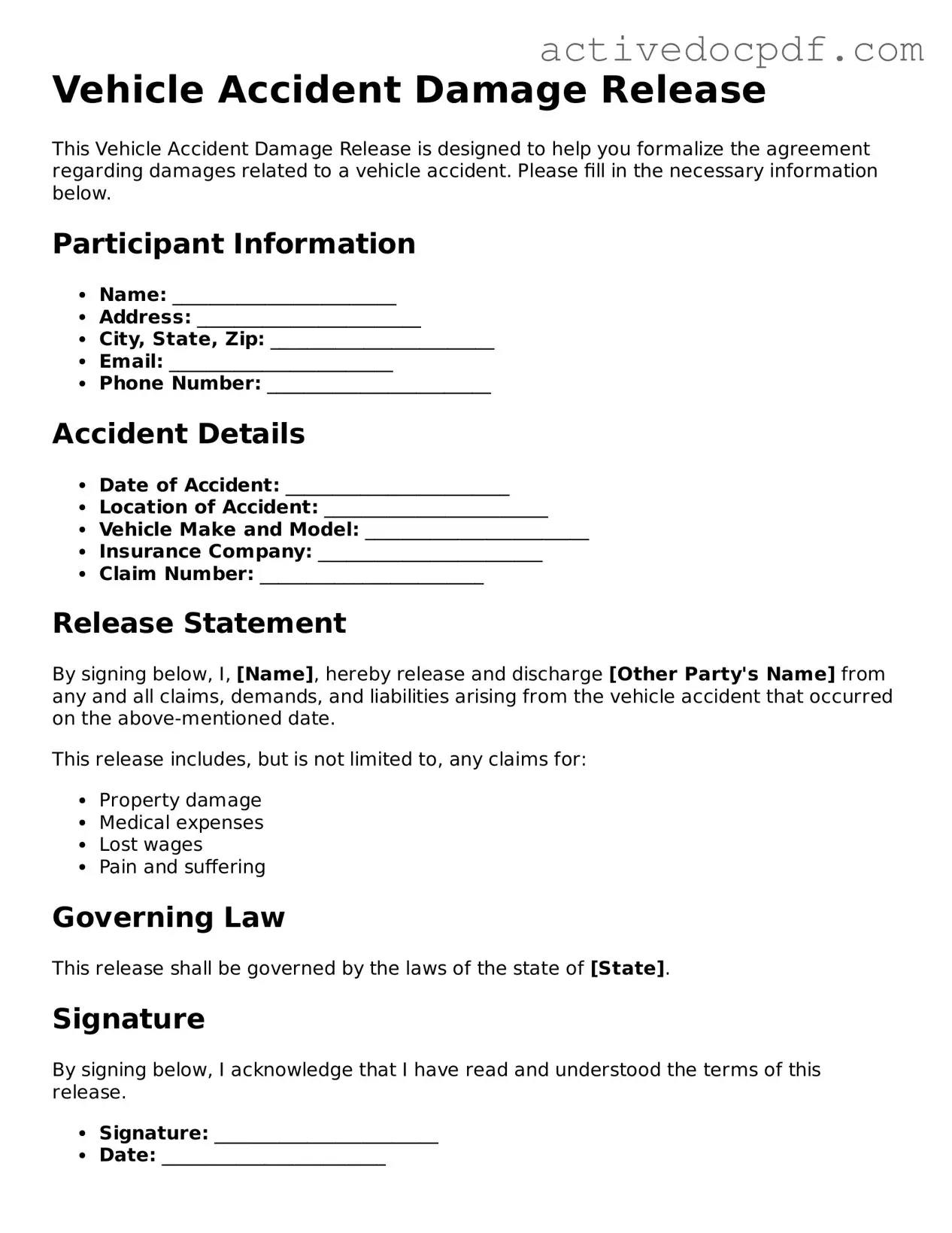Guide to Filling Out Vehicle Accident Damage Release
After receiving the Vehicle Accident Damage Release form, it’s important to fill it out carefully to ensure all necessary information is provided. This will help facilitate the process of resolving any claims related to the accident. Below are the steps to guide you through completing the form.
- Begin by entering your full name in the designated space at the top of the form.
- Provide your contact information, including your phone number and email address.
- Fill in the details of the accident, including the date, time, and location of the incident.
- Describe the vehicles involved. Include the make, model, year, and license plate number of each vehicle.
- Indicate any damages sustained by your vehicle. Be specific about the areas affected.
- Include any medical treatment you received as a result of the accident, if applicable.
- Sign and date the form at the bottom to confirm that all information provided is accurate.
Once you have completed the form, make sure to keep a copy for your records. You can then submit it to the relevant party to proceed with your claim or resolution process.
